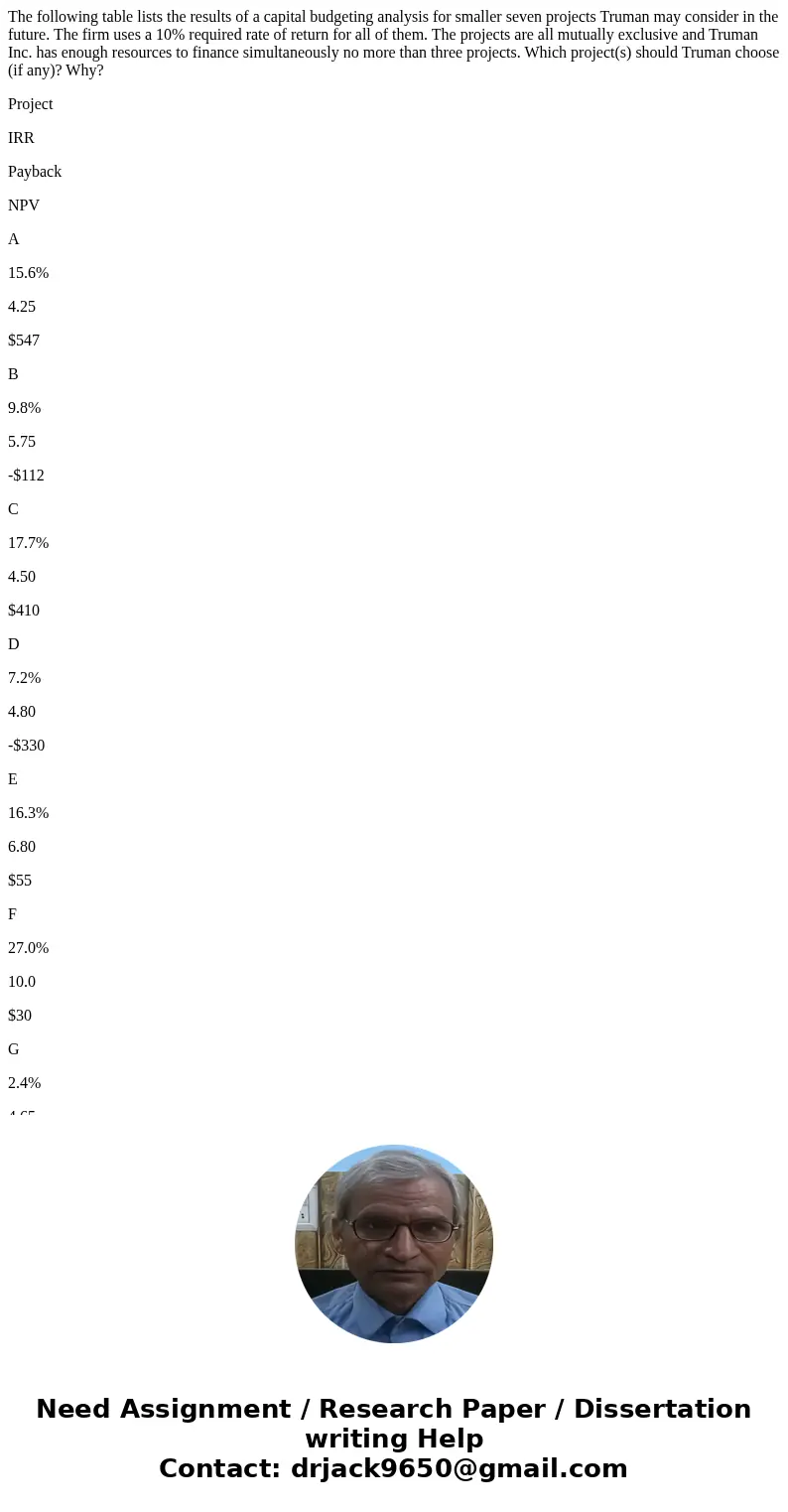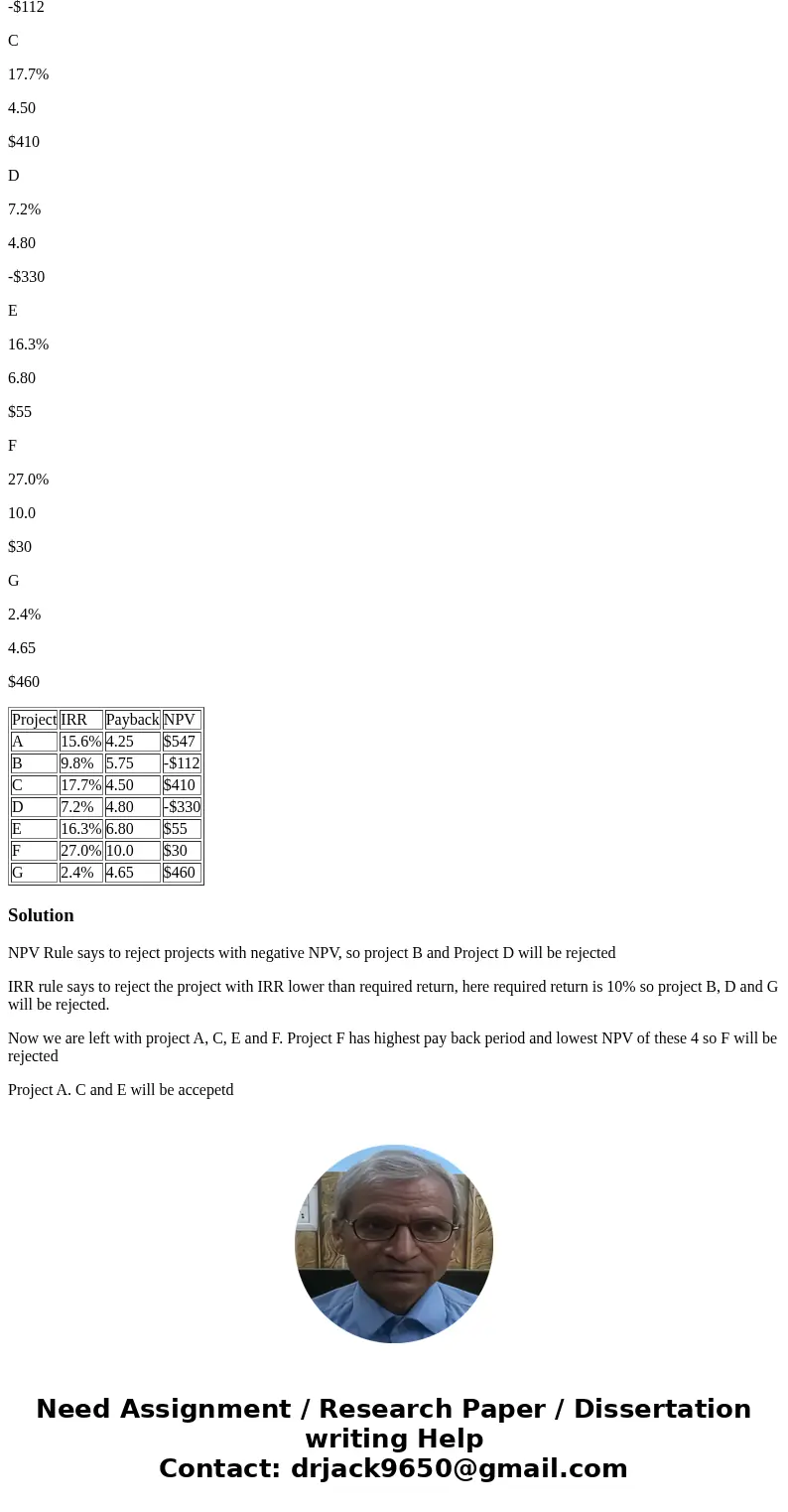The following table lists the results of a capital budgeting
The following table lists the results of a capital budgeting analysis for smaller seven projects Truman may consider in the future. The firm uses a 10% required rate of return for all of them. The projects are all mutually exclusive and Truman Inc. has enough resources to finance simultaneously no more than three projects. Which project(s) should Truman choose (if any)? Why?
Project
IRR
Payback
NPV
A
15.6%
4.25
$547
B
9.8%
5.75
-$112
C
17.7%
4.50
$410
D
7.2%
4.80
-$330
E
16.3%
6.80
$55
F
27.0%
10.0
$30
G
2.4%
4.65
$460
| Project | IRR | Payback | NPV |
| A | 15.6% | 4.25 | $547 |
| B | 9.8% | 5.75 | -$112 |
| C | 17.7% | 4.50 | $410 |
| D | 7.2% | 4.80 | -$330 |
| E | 16.3% | 6.80 | $55 |
| F | 27.0% | 10.0 | $30 |
| G | 2.4% | 4.65 | $460 |
Solution
NPV Rule says to reject projects with negative NPV, so project B and Project D will be rejected
IRR rule says to reject the project with IRR lower than required return, here required return is 10% so project B, D and G will be rejected.
Now we are left with project A, C, E and F. Project F has highest pay back period and lowest NPV of these 4 so F will be rejected
Project A. C and E will be accepetd


 Homework Sourse
Homework Sourse